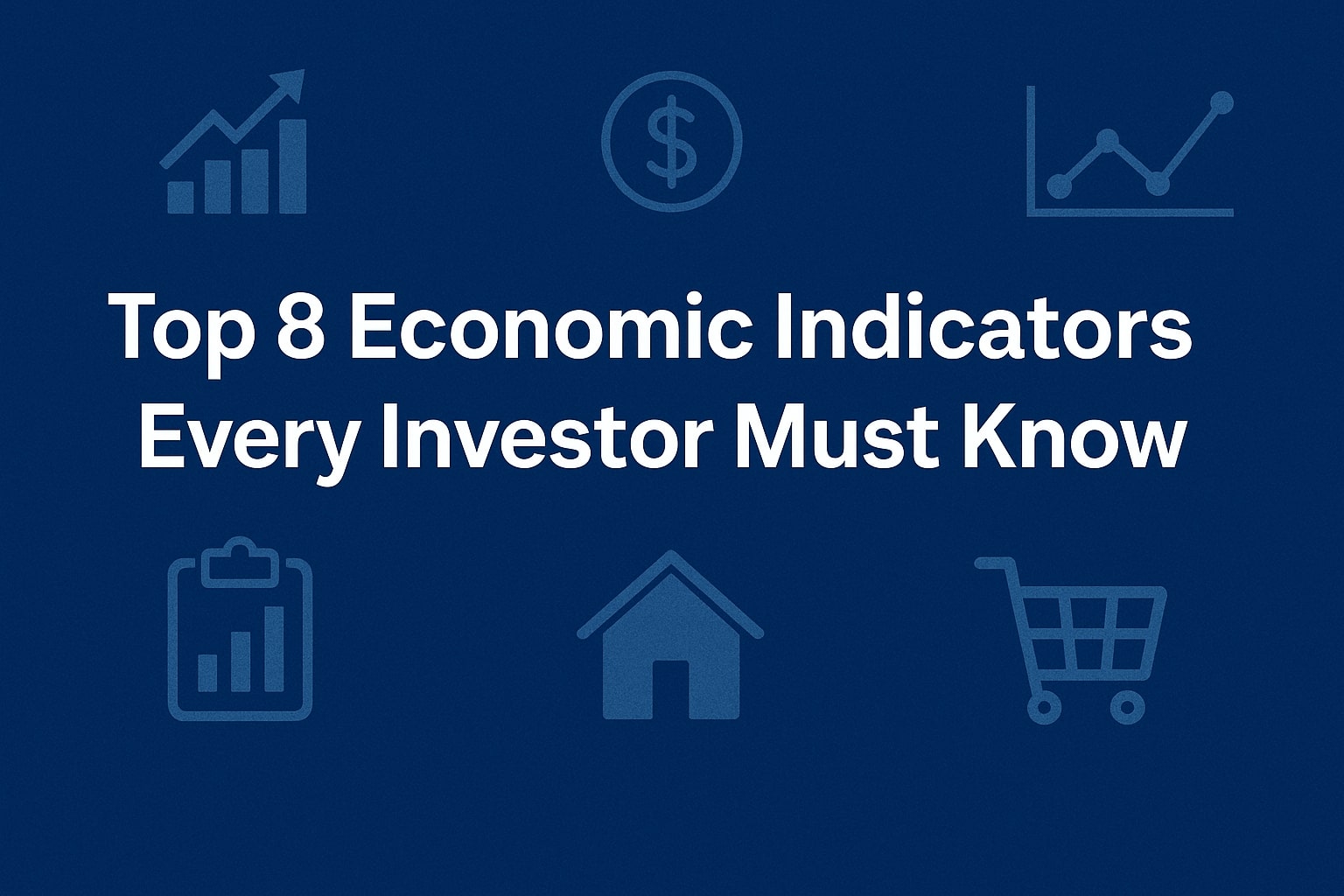Top 8 Economic Indicators Every Investor Needs to Know
By WB Loo | 2025-08-03
This page may contain some affiliate links. This means that, at no additional cost to you, Alpha Investing Group will earn a commission if you click through and make a purchase. Learn more

Navigating the sea of economic data can feel like charting a course through a storm without a compass.
With each new report on GDP revisions, inflation readings, and employment figures surfacing weekly, investors risk making crucial decisions based on noise rather than signal. The CFA Institute underscores that linking macroeconomic indicators to market valuations transforms raw statistics into actionable insights, allowing investors to anticipate shifts rather than merely react to price swings. Consider that an inverted U.S. Treasury yield curve — a leading indicator monitored by economists — has preceded every recession since the 1970s, offering a warning signal on average 14 months before downturns hit. I’m highlighting this because understanding and interpreting these economic gauges is essential for constructing portfolios that can withstand turbulent cycles. Arming yourself with clarity on metrics like GDP growth, inflation rates, and labor‑market trends shifts your strategy from reactive guesswork to proactive positioning.
Now, let’s explore the top 8 Economic Indicators that every savvy investor needs to know.
1. Gross Domestic Product (GDP)
Gross Domestic Product (GDP) serves as the economy’s scorecard.
It measures the total value of goods and services produced each quarter, offering a comprehensive view of growth dynamics. When GDP surges — such as the 2.4% annualized growth in Q4 2024 — it often portends rising corporate revenues and stronger market performance. Therefore, tracking GDP trends helps you distinguish between healthy expansions and looming slowdowns.
By aligning your portfolio to periods of accelerating or decelerating GDP, you can weight cyclicals and defensives in anticipation of the economic cycle.
2. Unemployment Rate
The unemployment rate reflects the share of the labor force without work, offering a real‑time gauge of job‑market health.
Calculated monthly by the Bureau of Labor Statistics, it reveals how many people are actively seeking employment. Even a modest uptick — like the stable 4.2% rate in March 2025, with 7.1 million jobless — can dampen consumer spending and corporate earnings. Thus, shifts in unemployment signal changes in consumer demand and profit potential.
Investors can use these labor‑market cues to adjust sector exposure, favouring consumer staples during weaker hiring phases and cyclicals when job growth accelerates.
3. Consumer Price Index (CPI)
Inflation is the silent tax that chips away at real returns.
The Consumer Price Index measures the average change in prices paid by urban consumers for a defined basket of goods and services. In March 2025, CPI increased by 2.4% year‑over‑year, a sign that price pressures remain sticky and central banks may tighten policy. As a result, CPI readings shape interest‑rate expectations and market sentiment.
By tracking these inflation dynamics, investors can shield their portfolios with assets that perform under rising‑cost environments.
4. Yield Curve
The Treasury yield curve maps borrowing costs across different maturities, reflecting market outlooks.
Comparing short‑term bills with long‑term bonds — such as the 3‑month versus 10‑year spread — reveals whether investors foresee stronger growth or looming slowdown. Notably, an inverted 10‑year / 3‑month curve has preceded each of the 10 U.S. recessions since 1955, providing a powerful recession signal. Therefore, curve inversions should prompt investors to reassess risk exposure and consider defensive positioning.
By watching shifts in curve steepness, you can lock in attractive yields or hedge equity risks ahead of economic turning points.
5. Purchasing Managers’ Index (PMI)
Purchasing Managers’ Index surveys business leaders to capture growth sentiment.
A PMI reading above 50 signals sector expansion, while below 50 indicates contraction. In March 2025, the Manufacturing PMI dipped to 49.0, marking a return to contraction territory amid tariff pressures. Since PMI often leads GDP releases by weeks or months, it provides an early gauge of economic momentum.
Savvy investors use PMI trends to rotate into industries poised for growth or defensive sectors before broader data confirm cycle shifts.
6. Retail Sales
Consumer spending drives roughly 70% of U.S. GDP.
Retail sales measure total receipts at stores and food services, adjusted monthly for seasonal effects. March 2025 saw retail and food services sales jump 1.4% to $734.9 billion, a 4.6% annual gain fuelled partly by preemptive auto purchases ahead of tariffs. Because retail figures reflect real‑time consumer behaviour, they act as a leading signal for economic strength or weakness.
By tracking retail trends, investors can anticipate shifts in consumer‑facing stocks and adjust allocations to cyclicals and staples accordingly.
7. Consumer Confidence Index (CCI)
Consumer sentiment captures the emotional backdrop behind spending decisions.
The Conference Board’s Consumer Confidence Index fell 7.2 points to 92.9 in March 2025, its lowest level since January 2021. Dwindling confidence usually precedes cuts in big‑ticket outlays, from autos to home renovations, dampening revenue growth for consumer brands. Thus, confidence readings offer a flash estimate of future demand before hard sales data emerge.
Investors can leverage these sentiment shifts to fine‑tune exposure to discretionary versus defensive equities.
8. Home Building
Residential construction underpins long‑term supply and economic investment.
In March 2025, privately‑owned housing starts fell 11.4% to a 1.324 million annualized pace, even as permits ticked up to 1.482 million. This downturn in groundbreakings reflects builder caution over cost spikes and financing headwinds, often foreshadowing slower growth in construction‑related sectors. Consequently, housing starts serve as a coincident indicator of investment momentum and consumer affordability.
For investors, early visibility into housing activity can guide positioning in homebuilder stocks, materials suppliers, and REITs before earnings show the impact.
These eight gauges — from GDP growth and unemployment to CPI, yield‑curve spreads, PMI, retail sales, consumer confidence, and housing starts — form the essential toolkit for reading the market’s underlying currents.
In my view, dismissing them is nothing short of gambling with your financial future.
